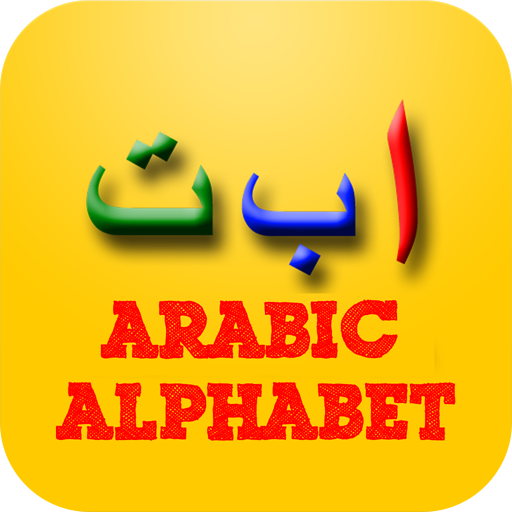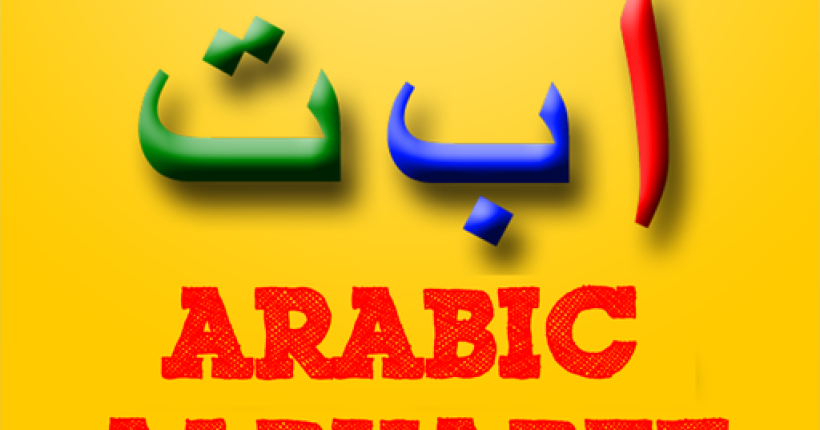Arabic writing online worksheets helps in identifying the various shapes of the letters and commit them to memory. There is no more lovely, visually pleasing writing system in the world, flowing right to left in a rhythmic, smooth motion.
But to build the same beauty for most Arabic students, the same beauty can be intimidating at first. The letters join together, change, and flow differently than English, making consistent handwriting a real challenge.
That is when Arabic writing online worksheets come in. Print-and-go, template sheets, they offer a simple but effective way of developing letter recognition, muscle memory, and smooth handwriting flow through repetitive practice.
In this guide, you’ll discover: The essential types of Arabic writing worksheets every learner should start with. The difference between Naskh and Ruq’ah scripts (and which one to learn first). The best free websites and apps offering Arabic alphabet tracing sheets and printable handwriting guides.
By the end, you’ll know exactly how to build your Arabic writing skills from isolated letters to fluent, confident script, all from the comfort of your home.
Phase 1: Foundational Practice (Beginner Level)
Starting at the Baseline: Essential Worksheets for the Arabic Alphabet. Learning to write Arabic begins with the 28 unique letters of the alphabet, each of which has its own graceful curves and flow.
But whereas English letters don’t change, Arabic letters do, depending on the position they hold within a word. For this reason, Arabic writing online worksheets are valuable: they give students a clean, structured environment in which to develop the correct forms and stroke order.
A. The 28 Letters: Isolated Forms
As a novice, it’s more effective to practice letter identification and tracing one letter at a time. This process forms the foundation for the rest.
Why you should do this step:
- It gets your hand accustomed to writing from right to left, which is an unnatural movement for English speakers.
- It makes recognition of letters stronger so that you can distinguish similar letters from one another (like ب, ت, and ث).
- It builds early muscle memory, the basis for smooth, natural handwriting later on.
Worksheet suggestion:
Look for free PDF Arabic alphabet tracing worksheets with huge, dotted letters and directional arrows. Every sheet should have plenty of space for repetition, tracing first, followed by writing freehand below. These worksheets are ideal for young learners and adults who need to learn each Arabic letter’s isolated form.
B. Controlling the Four Forms (Most Crucial Step for Everybody)
Undoubtedly the biggest Arabic writing hurdle is that letters change form depending on where within a word they appear:
- Standalone form (when alone)
- Starting form (when at the beginning of a word)
- Middle form (when somewhere in the middle)
- Ending form (when at the end of a word)
Many learners find this confusing at first, but Arabic letter form worksheets make it easy to visualize and practice these variations. By comparing each form side-by-side, you’ll quickly notice the patterns that define high-connector letters like ب, ت, ث, and ن.
Pro Tip: Practice one letter at a time across all four forms before moving to the next. Repetition is your best friend here!
Why Arabic Letters Change Shape?
Arabic is fundamentally a joined writing language, in the sense that the letters connect smoothly between words. It’s much like the difference between English printing and cursive script, the same letters look a little different written in the joined style. The changed forms within Arabic allow for this beautiful flow and ensure each word can be read and is visually pleasing.
What Is the Easiest Way to Learn to Write Arabic?
Start simple:
- Trace isolated letters first to build confidence and control.
- Use free Arabic alphabet tracing worksheets with dotted outlines to guide your hand.
- Once you’re comfortable, connect two or three letters to form simple words (like “حب” – hubb, meaning “love”).
- The key is consistency; even 10 minutes a day can make a visible difference in your writing fluency.
Phase 2: Advancing to Words and Scripts (Intermediate Level)
From Letters to Flow: Practice Sheets for Cursive and Pronunciation. Once you’ve built confidence tracing isolated Arabic letters, it’s time to take the next step, connecting them smoothly to form words. This stage transforms your handwriting from disconnected shapes into meaningful, flowing Arabic script.
The goal here is flow, getting from recognizing the letters to actually writing them in movement. And it is here that Arabic writing online worksheets are really a game-changer.
A. Connecting the Letters: Flow and Speed
Arabic writing is entirely cursive, meaning that every letter contacts the letter that comes before and after it. For a new learner, this interdependence can be rather tricky, specifically in that not every letter connects on both sides (e.g., د connects only to the right side, whereas ر doesn’t connect on the left side).
Why this stage is important:
It develops hand coordination as well as muscle memory so your pen glides smoothly from one letter to the next.
It helps students memorize usual connection rules, a basic requirement for legibility and fluency.
Worksheet recommendation:
Discover Arabic word practice pages containing brief, normal words like:
- سلام (salaam) – peace
- حب (hubb) – love
- نور (noor) – light
Have each page allow tracing, copying, and finally writing the word by hand. Repeating this makes doubtful strokes strong lines.
B. Harakat: Adding the Sounds that Bring Words to Life
Even if your letters are perfect, omitting harakat (short vowel marks) when typing can make your Arabic look unfinished, especially to students. Harakat are:
- Fatha ( َ ) – short “a” sound
- Damma ( ُ ) – short “u” sound
- Kasra ( ِ ) – short “i” sound
These little marks are important because they change the pronunciation and meaning of words.
Worksheet recommendation:
Try practicing vowel-based Arabic writing online worksheets where you copy and practice writing words with correct harakat placement. This will enhance your handwriting and reading skills so you can pronounce words correctly while writing them beautifully.
Example Exercise:
Write “كُتُب” (kutub, “books”) several times, taking extra care where you position each Damma, you will condition your eyes and hand simultaneously.
C. Naskh vs. Ruq’ah Scripts: Familiarity with the Two Main Styles
As you become more accustomed to Arabic writing, you’ll be introduced to different writing styles, mainly Naskh and Ruq’ah.
1. Naskh Script – The Student’s Guide:
- Employed in printed books and the Qur’an.
- Simple, clear, and legible.
- Ideal for beginning students learning letter shape and size.
Best Practice Tip: Learn with Naskh worksheets that focus on legibility and correctness.
2. Ruq’ah Script – The Author’s Daily Handwriting:
- Rapid and comfortable; used extensively for daily handwriting.
- Less complex letter joins but requires more pen control.
Best Practice Tip: Switch to Ruq’ah sheets once you feel easy with Naskh, best for building speed and natural flow.
Do I Learn the Naskh or Ruq’ah Script First?
Always start with Naskh script. It is the foundation of Arabic print and provides the most clarity for beginners. Once confident and in control, go on to Ruq’ah for a true handwritten appearance. Think of Naskh as “print handwriting” and Ruq’ah as “personal cursive.”
How Do I Make My Arabic Handwriting Beautiful?
Lovely Arabic handwriting is a skill built upon three things:
- Consistency – Write daily, even for 10 minutes.
- Stroke Order – Adopt the proper direction for all the letters; tracing is used to reinforce this.
- Style Imitation – Practice neat Naskh handwriting and try to copy its rhythm.
Through regular practice over time, as your confidence increases, you can even try your hand at Arabic calligraphy, adding an artistic flavor to your writing practice.
Phase 3: Where to Find the Best Online Worksheets
Now that you have an idea of what to practice and how to progress, the question becomes simple:
Where is it actually possible to find quality Arabic writing online worksheets for free? The silver lining? You won’t spend hours searching. The internet is packed with reliable websites offering free Arabic alphabet tracing sheets, Arabic letter forms PDFs, and printable handwriting guides for children and adults alike. Here’s where to start:
A. Specialized Worksheet Sites
There are some language-learning sites that specialize in offering free handwriting sheets for Arabic beginners. These usually are in PDF format, ready to be printed and used at home.
Look for:
- Tracing guides in ordered sequences from individual letters to worded sentences.
- Numbered arrow stroke direction for proper letter writing.
- Parallel visual comparisons of Naskh and Ruq’ah scripts.
Examples: Arabic Worksheets.org
This site is wonderful source for students who prefer step-by-step, self-guided handwriting exercise.
B. Educational Marketplaces
Sites like Teachers Pay Teachers (TpT) offer thousands of Arabic tracing worksheets posted by experienced teachers.
Here are steps to maximize their use:
- Use filters such as “free”, “Arabic alphabet tracing”, or “Naskh handwriting practice”.
- Download begin packs that include isolated letters, four forms practice, and simple words.
- Look for worksheets created by the teacher and supported by visual examples and practice lines.
These printable documents are ideal for home teaching by parents to their kids Arabic or adults who like well-structured self-learning documents.
C. Interactive Apps with Printable Practice
While worksheets help improve your pen control, using them together with electronic tools steepens your learning curve. Programs such as “Write It! Arabic” or “Learn Arabic Writing Practice” allow students to practice stroke order and letter connections on screen, an excellent way to enhance hand-eye coordination.
Pro Tip: Choose apps that allow you to print Arabic writing online worksheets, so you can continue practicing your handwriting offline. This two-pronged method (digital + print) gives the best returns for muscle memory.
D. YouTube Teachers & Downloadable PDF Packs
Several Arabic YouTube teachers now offer free downloadable PDF sets to accompany their video lessons. These are gems for visual learners.
Look for phrases such as:
- “Arabic alphabet tracing worksheets PDF”
- “Learn handwriting in Arabic for beginners”
- “Naskh vs Ruq’ah handwriting practice”
Video tutorials and matching worksheets let you trace the correct direction of stroke in writing, a great balance of visual and hands-on learning.
Pro Tip: Take a Structured Arabic Writing Course
While free learning is a great place to start, methodical learning under a skilled teacher can redouble your handwriting faster and better.
If you’re genuinely interested in mastering Arabic writing, we highly recommend enrolling in the Tareequl Jannah Arabic Course.
Here’s why students appreciate it:
- Comprehensive Curriculum: From practicing alphabet tracing to composing entire sentences.
- Arab Native Teachers: Get personalized comments on stroke formation and handwriting perfection.
- Flexibility Online: Study anywhere in the world at your own pace.
- Downloadable Worksheets & Writing Drills: Perfect for combining formal instruction with independent practice.
With this course, students move from letter recognition to writing fluent Arabic sentences with confidence with the help of Arabic writing online worksheets, the very path you need to achieve genuine results.


